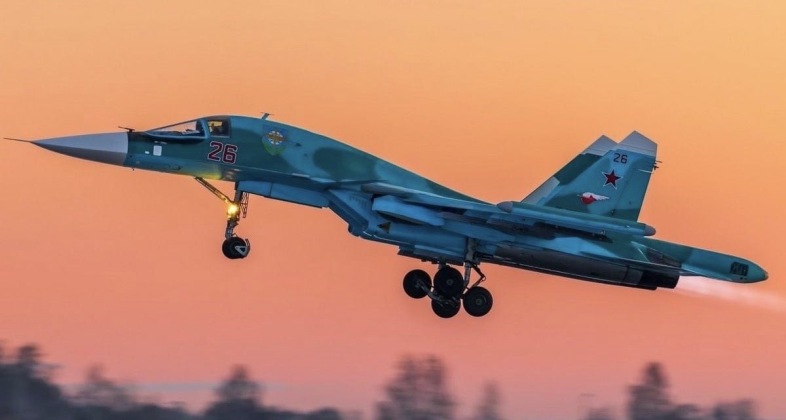The Russian Defense Ministry was reported by state media on August 16 to have signed a contract for the acquisition of an unknown number of new Su-34 strike fighters from the state owned United Aircraft Corporation (UAC), with the deal inked by Deputy Defence Minister Alexey Krivoruchko and UAC Vice President Alexander Bobryshev. This follows reports in June 2020 that the MoD had ordered 76 Su-34M jets in June 2020, the first of which were delivered in July 2022, and could expand the size of the fleet to well over 200 aircraft. The Su-34 has been ordered in much greater numbers by the MoD than any other fighter class over the past decade, with an estimated 124 having been in service at the beginning of 2022. For comparison, the Su-35 air superiority fighter which entered service almost simultaneously in 2014 had under 100 in Russian service, largely due to the fact that productive capacity has been diverted for export but also due to the Su-34’s more unique capabilities within the Russian fleet.

While the Su-35 already has a much longer range than any Western fighter class, the Su-34 has by far the longest range of any tactical combat jet in the world comparable to that of smaller strategic bombers, and has a reduced radar cross section comparable frontally to that of a cruise missile while boasting a powerful sensor suite and very large carrying capacity for ordinance. This allows them to strike targets across NATO territory from Russian airbases, while also covering much of the Pacific and Arctic regions. The aircraft have played particularly central roles in Russian military operators in Syria and Ukraine, and in the former were armed with air to air missiles to deter attacks by Western, Turkish or Israeli aircraft. Despite the fighters having gained no export sales due primarily to their specialist air to ground role, it is expected that close to 300 may be built allowing the Russian Air Force to replace all of its older Su-24M strike fighters in service and possibly a portion of its Su-25 attack jets and Tu-22M bombers – for which the Su-34 has been highlighted as a possible replacement. The emergence of specialist Su-34 variants for roles such as electronic warfare is expected to further increase the airframe’s usefulness, and could potentially also increase foreign interest with Su-24 and Su-22 operators such as Algeria and Vietnam being leading potential clients.
